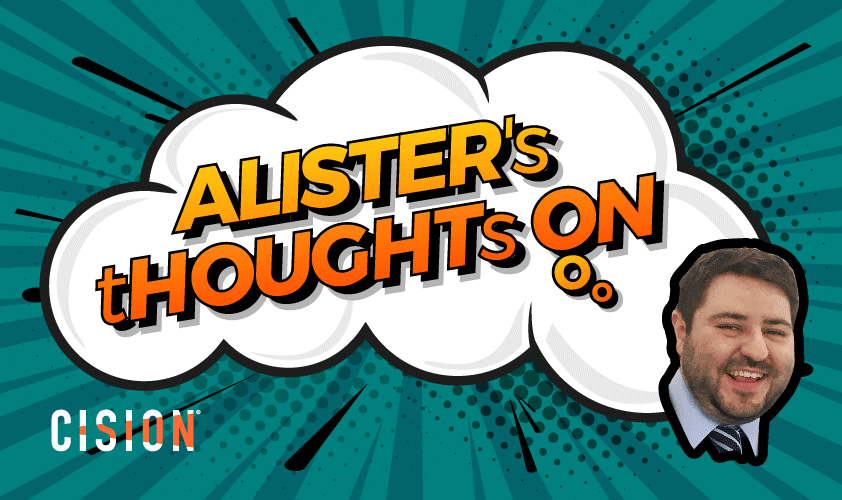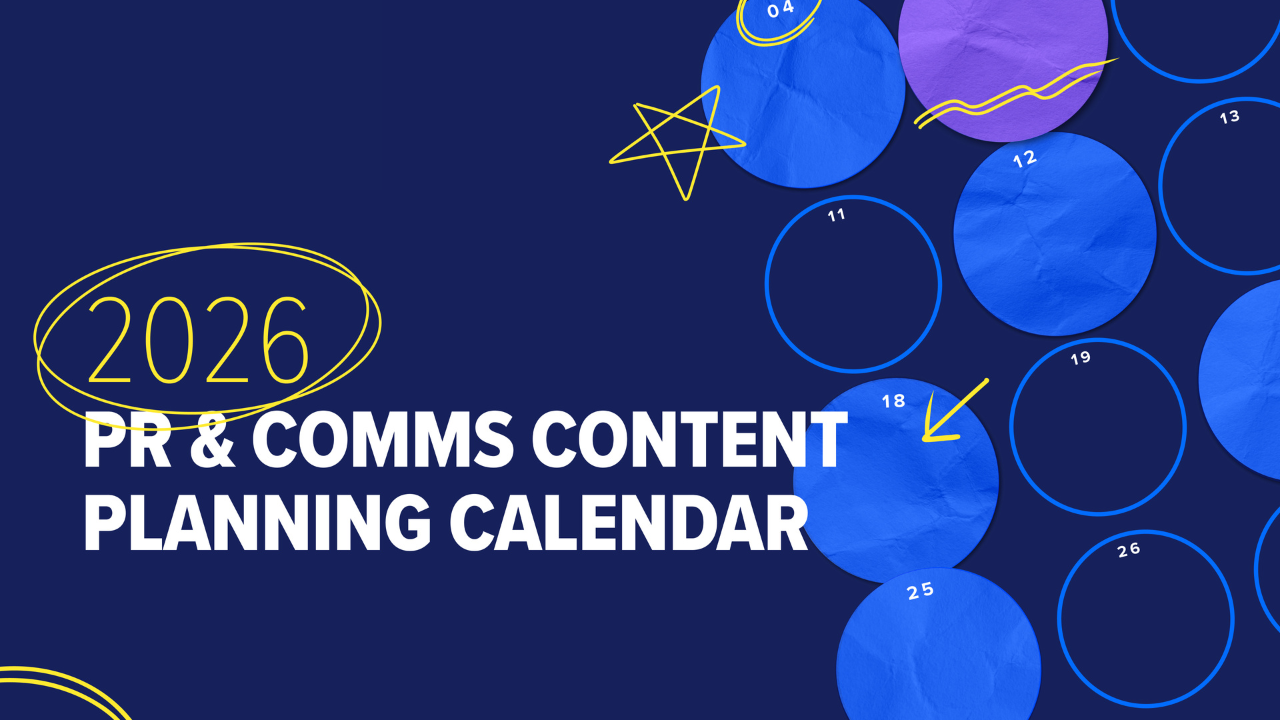
Media relations. As much as the industry wants to be seen as more than peddlers of press releases, the fact is that building relationships with the media is very much PR’s bread and butter.
I’m always been amused by communicators who want to distance themselves from media relations. Yes, PR is about much more than just this (a 1980s stereotype which the industry has worked hard to ditch) but, at the same time, no other sector is better placed to communicate with the media.
Working in a hybrid editorial/content role, I receive emails from owned and paid media professionals wanting to work with Cision and, frankly some of them leave a lot to be desired. As much as some journalists deride pitches they get from PRs, from personal experience what I receive is much more targeted, not simply fishing expeditions which read like spam.
There’s a reason communicators work in the earned media sector. It takes a lot of research, planning, creativity, graft and persistence. You can’t just buy some space in a publication or on a website, nor can you fire off an email to your target audience about a great new offer and watch the sales roll in.
Make no mistake, you have a hard job. However, the beauty of having a challenging role is that it isn’t something anyone can do. You need a particular blend of skills, knowledge and attitude to be successful as a media relations practitioner.
I know I certainly don’t have that winning mix, and from what I see on a daily basis it’s not something that comes naturally to a number of paid and owned media professionals either.
This is why communicators must embrace their media relations expertise, rather than treating it as a menial task to be handled by junior members of the team.
PRs can still do better
However, as much as the industry is still best-placed to build relationships with journalists, there’s much more communicators can do to make their media outreach more effective.
Cision’s 2019 State of the Media report found that 75% of journalists believe that less than one quarter of the press releases they receive are relevant to their audiences. There’s nothing masterful about media relations which garners feedback like that.
As well as my current semi-editorial beat, I’ve also been part of Cision’s media research team and did a journalism degree, so I have some experience when it comes to approaching journalists. Here are some of the things I’ve learned which can sharpen your media relations strategy:
Pick your winning titles
Every time we hold a media briefing, webinar or interview with a journalist, their feedback is always the same. The best thing a communicator can do is learn about the publication and the types of story its publishes.
Of course, you need to work across thousands of media titles, so it’s impossible to recall everything about every title (unless you have a perfect memory). My tip would be to identify the ten top media outlets for your brand and learn everything you possibly can about them.
What sort of depth are we talking? In our post-CommsCon webinar last year, MoneySavingExpert’s Katie Watts told us that she knew that the Daily Mirror’s Nada Farhoud had a page eight to fill every day, how many stories it would require to fill that page, what stories were suitable and how many words each piece would be.
That’s the level of depth you need to go into to really understand a title to be able to prepare yourself to continually work with its journalist.
For titles outside those top ten, you’ll likely subscribe to a media database which contains enough information for you to understand who to direct pitches at and the type of stories they’re looking for.
Target, aim, schmooze
Journalists receive hundreds – sometimes even thousands – of emails a day. Even if you send over the a perfectly targeted story, there’s a chance that it might get missed.
Rather than relying on a follow-up call, which more often than not annoy journalists (particularly if the call is one minute after you sent the email), your best bet is to already have built a relationship with that journalist.
Take journalists you know you’re likely to be working with on a regular basis out for coffee/lunch/drinks, let them know your role and find out what they need from you. That way, if they recognise your name in their inbox, they’ll be more likely to open the email, especially as they will know that you understand what they are and are not interested in covering.
In addition, if you ever end up having to deal with the reporter in a crisis situation, they’ll likely approach the story with more of an open mind and give you the benefit of the doubt.
One piece of coverage doesn’t mean eternal interest
This one is a personal bugbear, but it’s pertinent when dealing with journalists across different disciplines. A story involving your organisation or a client may well interest a journalist for that particular piece, but that doesn’t mean they’re going to be interested in that organisation again in future.
As an example, I cover agency account wins, so I’m always very happy to hear about agencies being appointed to new client briefs. However, what happens then is that I’ll be added to the general distribution list, which means I’ll get emails about new HR initiatives, company results and various other things which are not relevant to what I write about.
Just adding anyone you’ve had contact with onto one big press release distribution list is going to undo the relationship you built up when you got your original piece of coverage. Again, targeting is key; not every journalist is going to be interested in every release you send, but every release you send will be of interest to someone.
Take a few seconds to think about who that “someone” might be and you’re more likely to get a positive response.
Do the work for the journalist
We all know that journalists are busier than ever before; having to produce more stories for a greater variety of platforms with fewer resources.
If you can serve up an almost ready-made story with statistics, quotes, case studies and imagery, then you’re saving a journalist a lot of time and they’ll appreciate being able to secure a quick win which allows them to move onto another story.
This point comes with one caveat though: never tell a reporter the angle they should take on a piece. Suggest where it might work for their outlet by all means, but the angle of the story is a journalist’s prerogative, telling them how they should cover a story will only antagonise them, counter productively meaning they’ll be less likely to cover the story in the way you’d want them to.
Can I get a picture with that?
On the subject of having resources to hand, I’m sometimes surprised by how difficult it can be to secure pictures from PR professionals.
I would say having some form of high-res image to accompany your story is the second-most important part of a media relations campaign, behind being able to summarise your story into one sentence.
Without getting too scientific, the human brain is far better at remembering images than text. So if you want any coverage you secure to be memorable, you should be pushing for journalists to include as many images as possible, never mind have journalists chasing you for them.
So, have images at the ready, either attached to or embedded in your press release, in portrait and landscape formats. If you don’t, you’re seriously narrowing your chances of an outlet running your story, and at best the most memorable aspect of the piece will be a boring stock image.
Hear what journalists have to say
While all of these tips are quite generic and cover most situations, every outlet and every journalist is different, there is no silver bullet when it comes to a perfect media relations approach.
That’s why you need to immerse yourself in the media world. For example, you’d know that it would be unwise to ask Bloomberg’s Deirdre Hipwell to go and edit the piece she’s already written to include a link, whereas other journalists might be happy to.
This is why Cision holds regular webinars and media briefings with journalists, so that communicators have the opportunity to find out their preferences and tailor their media outreach for different outlets. After all, there’s no point in sending a press release to someone who confesses to not reading their emails.
There’s no perfect formula to master media relations, with luck also playing a huge part in whether a journalist runs your story. However, as the famous quote (almost) goes: “The more I know about the media, the luckier I get with my outreach.”
For more tips on how to hone your media relations strategy, download Cision’s white paper on the topic – How to master modern media relations and deliver the right results – by filling in the form below:
About Alister Houghton
Alister writes about the PR and comms industry as content marketing manager at Cision. Send press releases, interview pitches, Inside the Campaign/PR case study examples and thought leadership pieces to alister.houghton@cision.com.
Learn More. Do More. demo new
PR Tips, Case Studies, and Product Updates

[On-Demand Webinar] The Next Generation of Media Intelligence: From Gorkana to CisionOne
Explore CisionOne, a revolutionary media intelligence platform, and the evolution of Gorkana. Learn key features and strategies from Luke Williams, CisionOne Product Marketing Manager. Elevate your media outreach to new heights!


